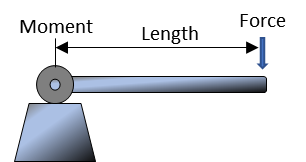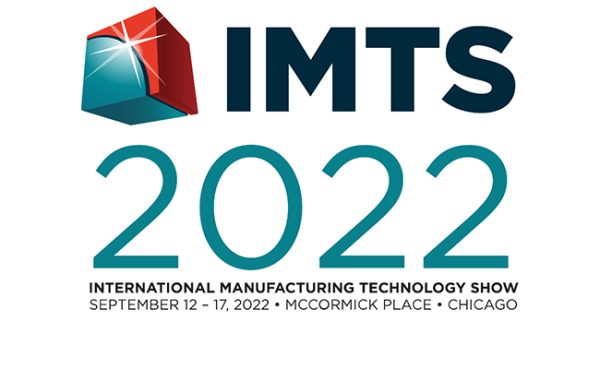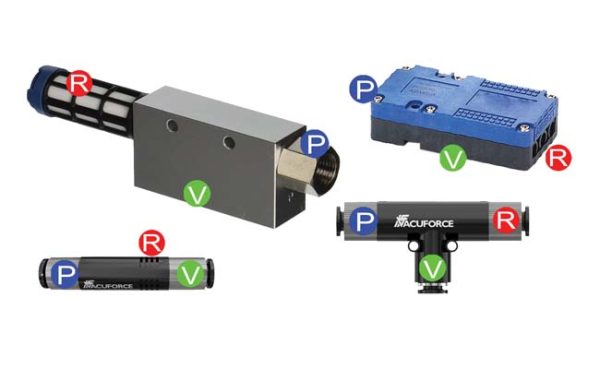Raising the bar: I Just Need a Moment
By Dan Helgerson —
I was reviewing a recent article in Fluid Power Journal and came across the term “moment” followed by a parenthetical note indicating that it was equated with torque. So I got to wondering what the difference is between moment and torque, if any. And if there is no difference, why have two different words for the same thing? And, by the way, what is “moment of inertia”?
Here are some definitions.
Moment. The concept of moment in physics was first brought to light by the great inventor and mathematician Archimedes. While researching levers, he found that applying a force on a lever arm produced an increased force at the point where the lever arm pivots. He wrote about the principle of this increased force.
In 1565, his work was translated into Latin, and this force at the pivot point was called momentorum, the mover. The word in English and was used to indicate an event that brings about an important result, as in a momentous occasion. The concept then began to include something that occurred quickly, leading to the current usage of “moment” to mean a short period of time.
But in engineering, moment is still used to indicate a force at a pivot point that is caused by the force against a lever arm at some length from the pivot. This moment is calculated by multiplying the force at the lever arm by the length of the lever arm to the pivot. M = F x l where M = moment, F = force on the lever arm, and l = length from the force to the pivot. Because the force is relative to a pivot point, moment is a rotational force. It is most often described in Newton/meters (Nm), inch/pounds (in./lbs.), or foot/pounds (ft./lbs.

Torque. Torque refers to a rotational force and is calculated as force applied at some distance from a pivot point. It is most often described in Newton/meters (Nm), inch/pounds (in./lbs.), or foot/pounds (ft./lbs.).
Wait a second! Isn’t that exactly how moment is defined? Well, sort of.
It depends on the context. Moment describes the force at the pivot point without thinking about causing something to rotate. Torque is used when the subject is the rotational force that is needed and intended to cause rotation around a pivot point. Torque is also used to define a force that originates at the pivot point and diminishes as the lever arm lengthens.
Inertia. The 17th-century scientist Galileo introduced the concept of inertia, noting that an object in motion eventually stops due to friction. Later, Isaac Newton described inertia this way: “In the absence of external forces, motion in a straight line and at constant speed continues indefinitely.” In other words, it takes effort to start something moving and effort to stop it. Inertia is simply the characteristic of any object to keep doing what it is doing. If it is stopped, it wants to stay stopped; if it is moving, it wants to keep moving. It stays stopped or moving until something makes it change.
Moment of inertia. We have established that moment is a rotational force. We have also established that inertia is the resistance to any change in state. So, the moment of inertia is the rotational force equal to the resistance of the object to rotate. It is an acceleration formula and is calculated by multiplying the mass of the object by the square of the length to the center of gravity. I = ml2 where I is inertia, m is mass, and l is the length to the center of gravity. A force greater than the moment of inertia causes an angular acceleration (it makes it spin).
 So why would a fluid power professional need or even want to know about moment? In the illustration above, we have a cable cylinder with a magnetic mounting plate attached to the cable. A load is connected to the mounting plate by the magnetic force. There is a limit to the acceleration that can be applied to the load because of the moment of inertia. Accelerating the mounting plate causes it to try to pull away from under the load. This produces a rotational force (moment) at the pivot point. If the acceleration force exceeds the moment of inertia, the load rotates off the mounting plate.
So why would a fluid power professional need or even want to know about moment? In the illustration above, we have a cable cylinder with a magnetic mounting plate attached to the cable. A load is connected to the mounting plate by the magnetic force. There is a limit to the acceleration that can be applied to the load because of the moment of inertia. Accelerating the mounting plate causes it to try to pull away from under the load. This produces a rotational force (moment) at the pivot point. If the acceleration force exceeds the moment of inertia, the load rotates off the mounting plate.
 Knowing the moment (the magnetic force holding the load) along with the dimensions and mass of the load enables us to determine the maximum acceleration of the load and consequently the minimum travel time to the end of stroke.
Knowing the moment (the magnetic force holding the load) along with the dimensions and mass of the load enables us to determine the maximum acceleration of the load and consequently the minimum travel time to the end of stroke.
So when you are asked to size a cable cylinder to move a load, tell them you just need a moment.
Share this information.
Related Posts

IMTS Day Three: Additive Manufacturing Pavilion Envisions ‘Democratization’

Fluid Power is Dead

National Fluid Power Association Awards 23 Fluid Power Scholarships

PA Students Visit Schroeder Industries to Show Manufacturing Is Cool

Vacuum Venturis: Air-Powered Generators

Signs of the Times: Expanding Hydraulic Hose Performance Metrics
Get Our Enews!
Fluid Power Journal Resources

